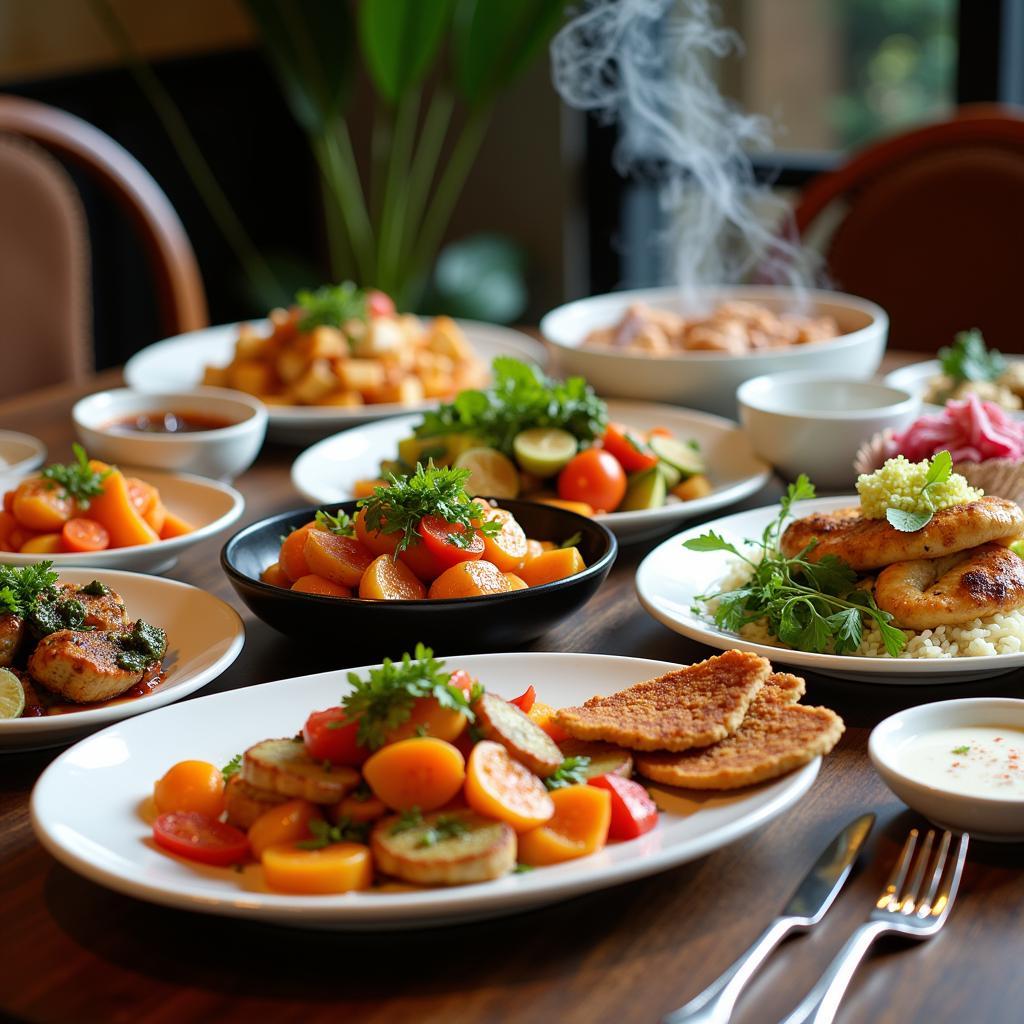The phrase “kích thích vị giác” in Vietnamese translates directly to “tantalize your taste buds” in English. It’s a vivid and evocative expression used to describe food or drinks that are incredibly appealing and delicious, making your mouth water in anticipation.
Exploring the Meaning of “Tantalize Your Taste Buds”
The phrase beautifully captures the sensory experience of encountering something truly delectable. Let’s break it down:
- Tantalize: This verb means to torment or tease with the promise of something desirable but ultimately unattainable. Imagine a delicious cake just out of reach!
- Taste Buds: These are the sensory organs on your tongue responsible for detecting different flavors like sweet, sour, salty, and bitter.
When combined, “tantalize your taste buds” describes food that is so enticing, it awakens your senses and creates a longing to savor every bite.
How to Use “Tantalize Your Taste Buds” in a Sentence
Here are a few examples of how you can use this phrase effectively:
- “The aroma of freshly baked bread wafting from the bakery is enough to tantalize your taste buds.”
- “This chef is known for his culinary creations that tantalize the taste buds and leave a lasting impression.”
- “Get ready to have your taste buds tantalized by the explosion of flavors in our new summer menu.”
 Smiling woman with white teeth
Smiling woman with white teeth
Beyond “Tantalize Your Taste Buds”: Other Ways to Describe Delicious Food
While “tantalize your taste buds” is a powerful phrase, the English language is rich with alternatives to express culinary delight:
- Mouthwatering: This adjective perfectly captures the physical sensation of salivating in anticipation of a delicious meal.
- Scrumptious: This word implies that the food is extremely pleasing to the taste and leaves you wanting more.
- Divine: Use this adjective when the food is so extraordinary, it feels like a heavenly experience.
- Delectable: Similar to “scrumptious,” “delectable” emphasizes the enjoyment and satisfaction derived from the taste.
Tips for Using Vivid Language to Describe Food
When aiming to tantalize your readers with descriptions of food, consider these tips:
- Engage All the Senses: Don’t just focus on taste; describe the aroma, texture, appearance, and even the sound of the food.
- Use Strong Verbs: Instead of simply saying “The cake was good,” try “The cake melted in my mouth” or “The flavors danced on my tongue.”
- Be Specific: Instead of “delicious spices,” name them: “a fragrant blend of cinnamon, nutmeg, and cloves.”
- Draw Comparisons: “The chocolate was rich and dark, like a moonless night.”
By using evocative language and appealing to all the senses, you can effectively convey the irresistible allure of delicious food and truly tantalize your readers’ taste buds!
 Delicious and attractive dishes
Delicious and attractive dishes
Conclusion
Next time you encounter something incredibly delicious, remember the power of “tantalize your taste buds” and its many flavorful synonyms. Using vivid and evocative language to describe food can elevate your writing, engage your readers, and perhaps even inspire them to embark on their own culinary adventures.
For more tips on enriching your vocabulary and expressing yourself with flair, check out our articles on Thích Thiện Hoa Phật Học Phổ Thông and Cháo Ăn Liền Cho Bé Được Mẹ Yêu Thích Nhất.